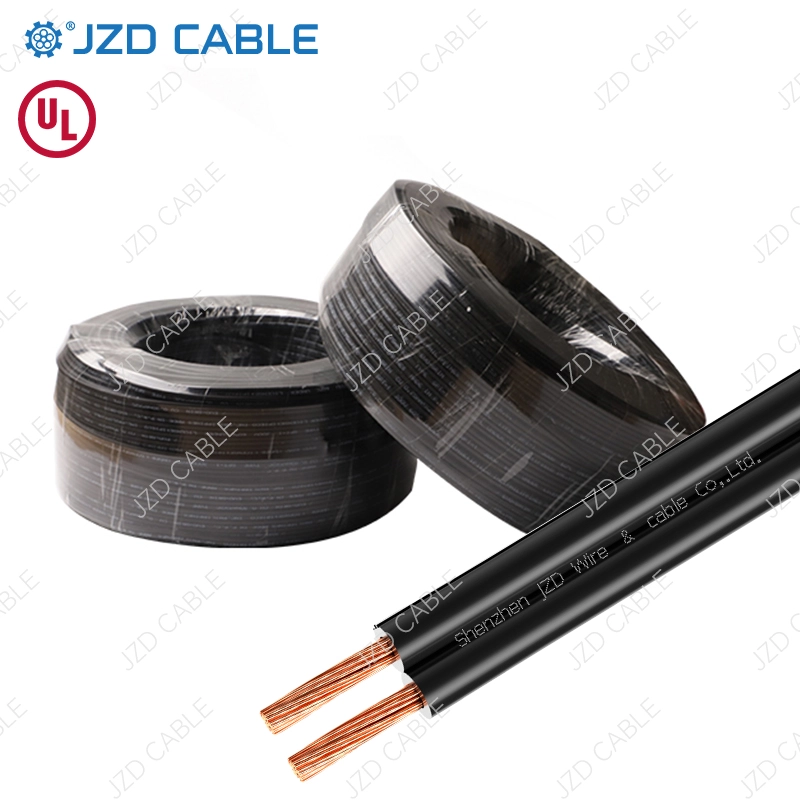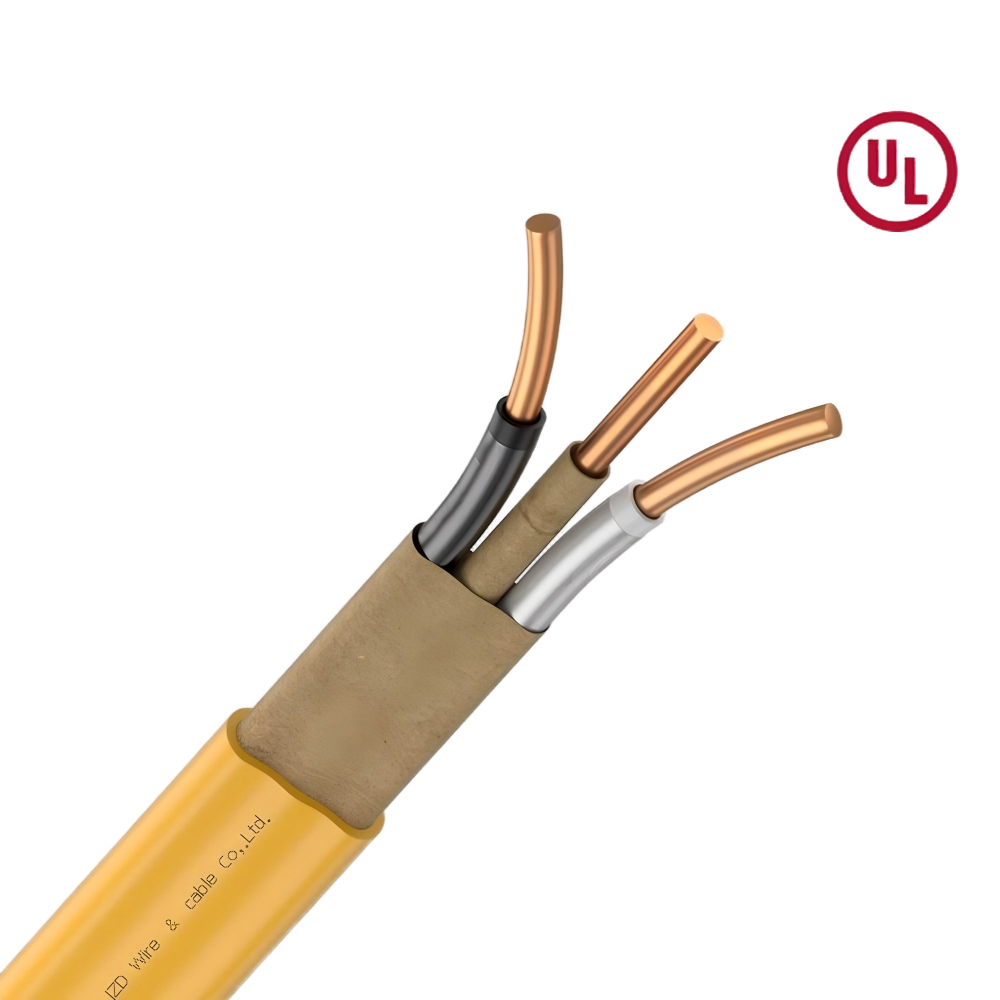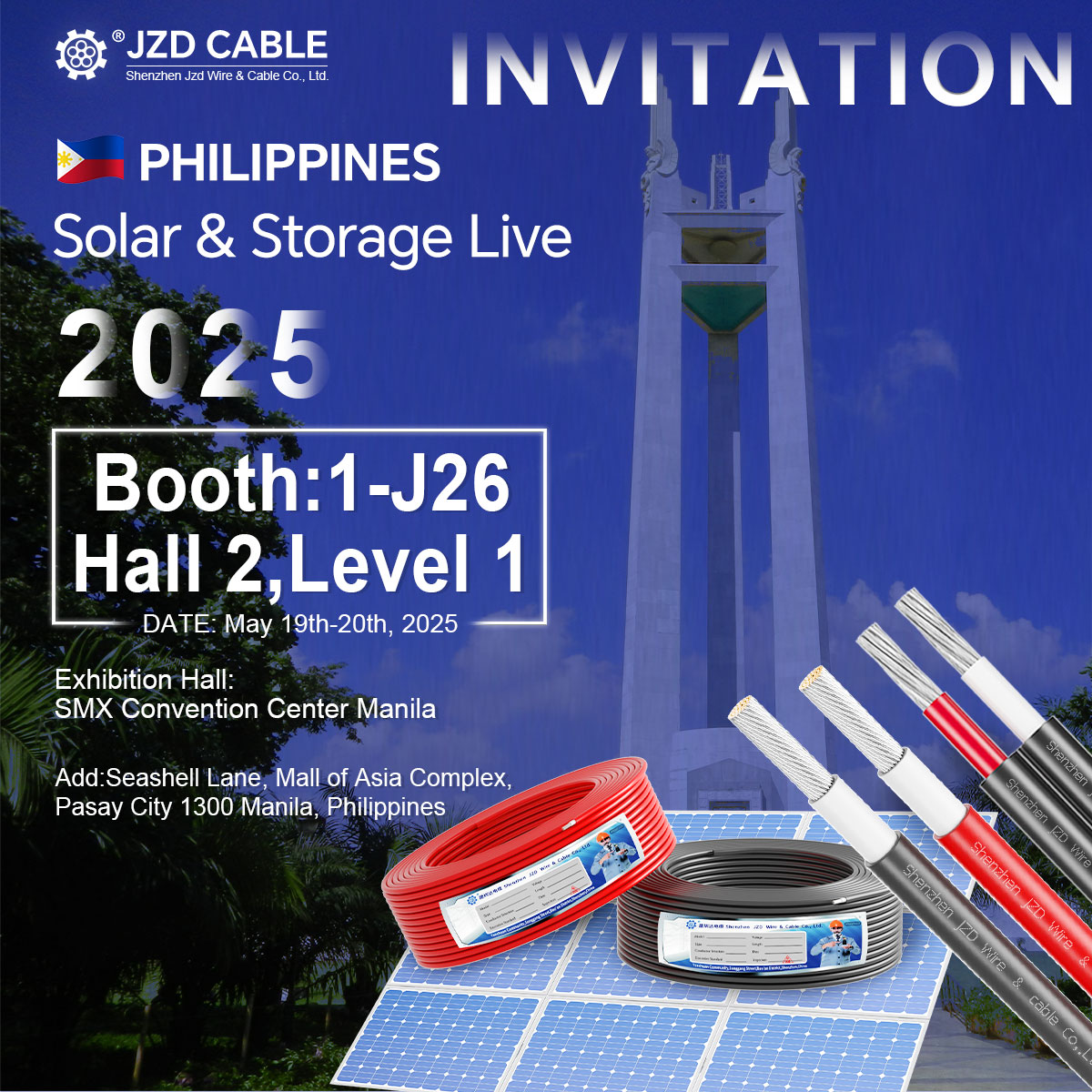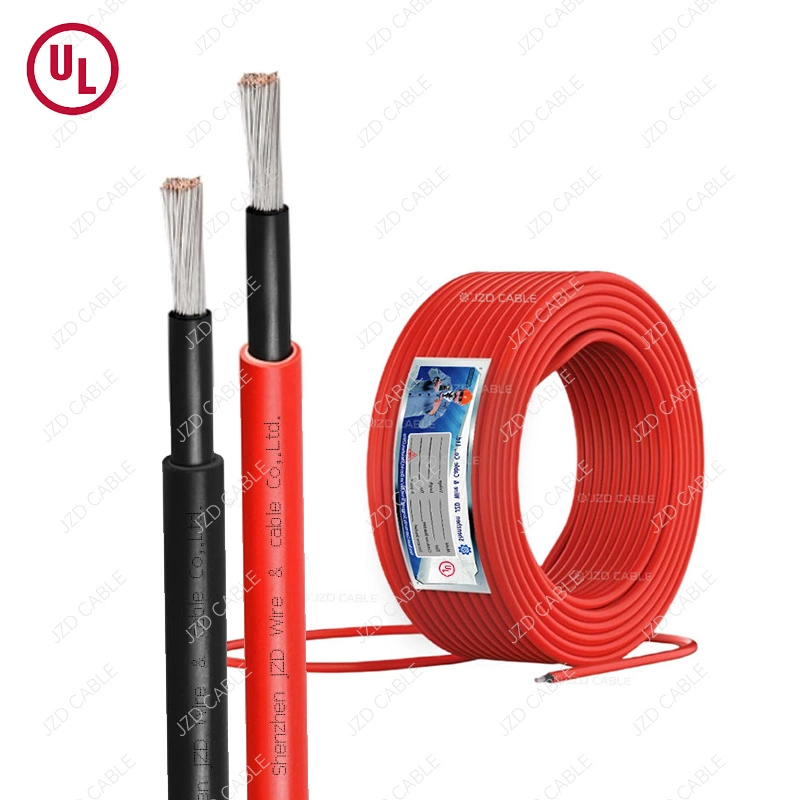Power cords are the unsung heroes keeping our devices running and lights glowing. Among the diverse types available, SPT power cords stand out for their versatility and common use in household and light commercial settings. Also known as lamp cords or zip cords, SPT cords are a popular choice for many applications. At JZD Cable (jzdcable.com), we provide reliable, UL-certified SPT cabling solutions. This guide explains what SPT cords are, where they’re used, and clarifies the crucial differences between SPT-1, SPT-2, and SPT-3.

What is an SPT Power Cord?
SPT stands for Service Plastic Thermoplastic. It refers to a specific style of light-duty, parallel-jacketed electrical cord. Key characteristics include:
- Parallel Conductors: The two insulated conductors run side-by-side within a flat jacket (rather than being twisted together). This allows them to be easily separated or “zipped” apart lengthwise, earning the nickname “zip cord.”
- PVC Insulation & Jacket: Both the individual wire insulation and the outer jacket are typically made of flexible PVC (Polyvinyl Chloride) thermoplastic.
- Light-Duty Rating: SPT cords are generally rated for use with Class 2 appliances (double-insulated devices like lamps, small appliances, electronics) or for specific approved applications where grounding isn’t required. They typically have a voltage rating of 300V.
- Common Gauges: The most common conductor sizes (AWG) are 18 AWG and 16 AWG, suitable for lower power devices.
- Polarization: Many modern SPT cords feature a ridged or marked insulation on one conductor to allow for polarized plugs and sockets, enhancing safety.
Where Are SPT Power Cords Used? (Application Scenarios)
SPT cords are ubiquitous in homes, offices, and light commercial environments due to their flexibility, cost-effectiveness, and ease of use:
- Lamps & Lighting Fixtures: The quintessential application, powering table lamps, floor lamps, and many types of decorative lighting.
- Small Appliances: Coffee makers, blenders, toasters, mixers, fans, radios, clocks, and other countertop devices rated within the cord’s capacity.
- Consumer Electronics: Powering monitors, speakers, printers, chargers, and other low-power electronic devices.
- Seasonal & Decorative Lighting: Christmas lights, string lights, patio lanterns, and other temporary or decorative lighting setups frequently use SPT-1 or SPT-2 cord.
- Extension Cords (Light-Duty): Used as components in light-duty extension cords, often sold as “lamp cord” extensions.
- Refrigerators & Freezers (Specific Models): Many smaller, energy-efficient home refrigerators and freezers use SPT-3 cords as their factory power supply.
- Commercial Applications: Vending machines, beverage coolers, point-of-sale systems, and other light commercial equipment often utilize SPT cords.

Understanding the Differences: SPT-1 vs. SPT-2 vs. SPT-3
The numerical suffix (1, 2, or 3) indicates the thickness of the outer PVC jacket. This jacket thickness is the primary differentiating factor, impacting durability, flexibility, and suitability for specific environments. The conductors inside (gauge and count) remain the same within a given AWG rating (e.g., 18/2 or 16/2).
Here’s a breakdown:
- SPT-1:
- Jacket Thickness: Thinnest jacket (~0.03 inches or 0.76 mm).
- Characteristics: Most flexible and least expensive. Most susceptible to physical damage, crushing, or abrasion. Conductors easily separable.
- Best For: Very light-duty applications where maximum flexibility and low cost are priorities, and the cord is well-protected. Common in low-power indoor lamps, some indoor decorative lighting.
- Common AWG: 18 AWG (sometimes 20 AWG for very light loads).
- SPT-2:
- Jacket Thickness: Medium thickness jacket (~0.045 inches or 1.14 mm) – significantly thicker than SPT-1.
- Characteristics: The most common and versatile type. Offers a good balance of durability, flexibility, and cost. More resistant to abrasion and crushing than SPT-1. Conductors can still be separated relatively easily.
- Best For: The workhorse of SPT cords. Ideal for most household lamps, small appliances, electronics, and indoor decorative lighting. A safe choice for general-purpose light-duty applications.
- Common AWG: 18 AWG (most common), 16 AWG.
- SPT-3:
- Jacket Thickness: Thickest jacket (~0.06 inches or 1.52 mm) – double the thickness of SPT-1.
- Characteristics: Most durable and crush-resistant SPT type. Least flexible (though still flexible compared to heavier cords). Best moisture resistance. Conductors are harder to separate due to the thick jacket. Often used in applications where more ruggedness is needed or where UL requires a thicker jacket for specific uses (like refrigerator cords).
- Best For: Situations requiring extra durability: refrigerators, freezers, larger appliances, vending machines, commercial coolers, outdoor-rated appliances (with appropriate connectors/usage), high-traffic areas, or anywhere increased physical protection is advantageous.
- Common AWG: 16 AWG (most common for appliances), 18 AWG.
Summary Table: SPT Cord Differences
| Feature | SPT-1 | SPT-2 | SPT-3 |
|---|---|---|---|
| Jacket Thickness | Thinnest (~0.03″) | Medium (~0.045″) | Thickest (~0.06″) |
| Durability | Least durable | Moderate | Most durable |
| Flexibility | Most flexible | Moderate | Least flexible |
| Cost | Lowest | Moderate | Highest |
| Common Uses | Light indoor lamps | General lamps/appliances | Refrigerators, appliances, commercial, outdoor (with rating) |
| Conductor Ease | Easiest to separate | Relatively easy | Hardest to separate |
Important Notes on SPT Cord Use:
- Load Capacity: Always check the device’s power requirements (wattage or amperage) and match it to the cord’s AWG rating and length. 16 AWG handles more current than 18 AWG. Never overload a cord.
- Voltage Rating: Standard SPT cords are rated for 300V. Ensure this is suitable for your application.
- Temperature Rating: Verify the cord’s temperature rating is appropriate for the environment and the device it powers (e.g., near a heat source).
- Grounding: SPT cords are typically 2-conductor (ungrounded) designs (SPT-1, SPT-2, SPT-3). For devices requiring grounding, an SJT or SJ type cord (round jacketed, often 3-conductor) is required.
- UL Certification: Use only cords certified by UL (Underwriters Laboratories) or equivalent national testing laboratories to ensure they meet stringent safety standards. All JZD Cable SPT cords are fully certified.
- Environment: Do not use standard SPT cords in wet locations unless specifically rated as “Outdoor” or “Wet Location” (often denoted by suffix like “W”). SPT-3 is generally the best base type for outdoor-rated cords due to its thicker jacket, but the specific rating is crucial.
- Physical Protection: Avoid pinching cords under furniture, running them through walls/floors (unless rated for it), or exposing them to sharp edges or repeated abrasion.
Choose JZD Cable for Your Reliable SPT Power Cord Needs
At JZD Cable (jzdcable.com), we understand the importance of reliable and safe power connections. We offer a comprehensive range of high-quality, UL-certified SPT power cords (SPT-1, SPT-2, SPT-3) in various gauges (18 AWG, 16 AWG), lengths, colors, and configurations to meet your specific requirements. Whether you’re a manufacturer incorporating cords into your products or a business sourcing replacement cables, we have the expertise and solutions you need.
Looking for the right SPT cord for your application? Browse our range of certified SPT Wire or Contact JZD Cable today for expert advice!







